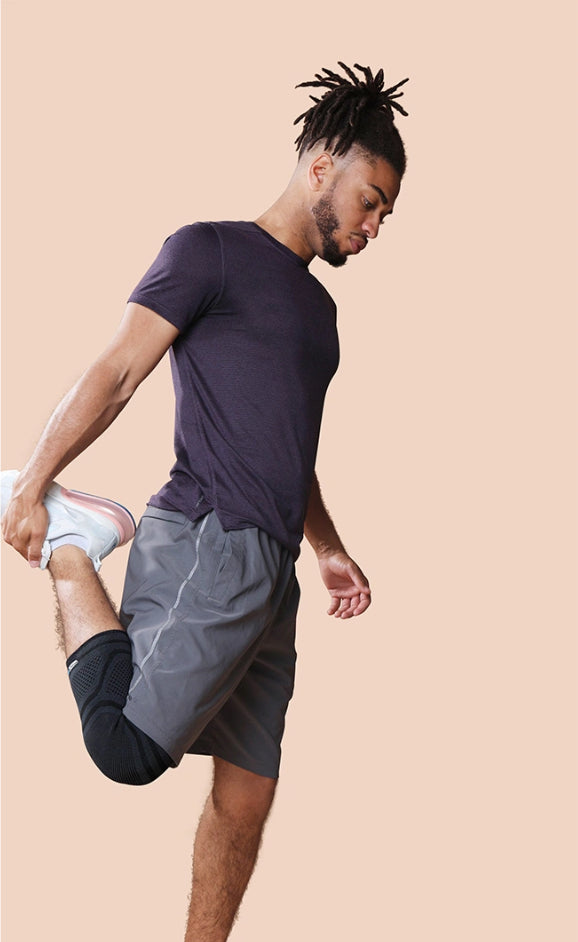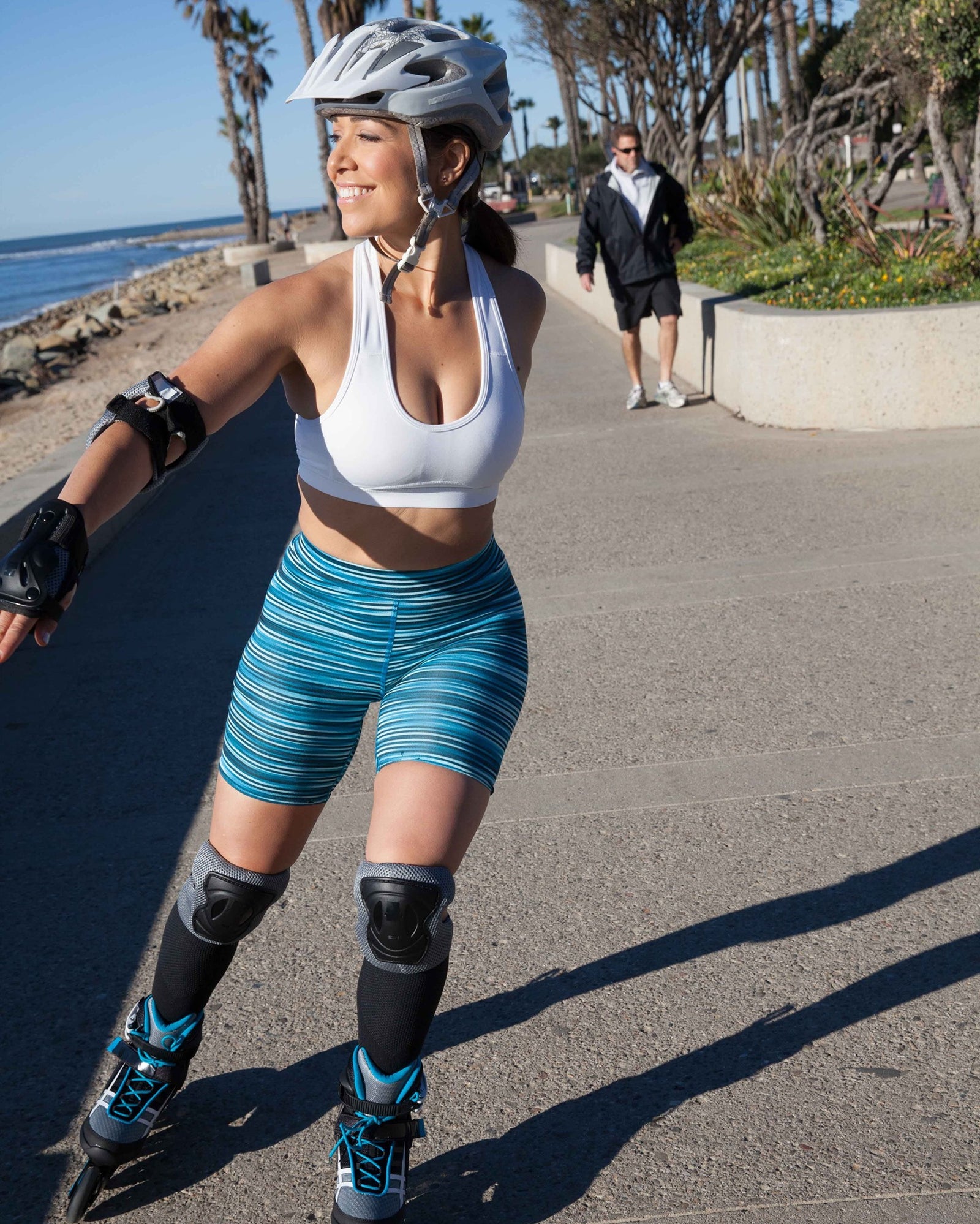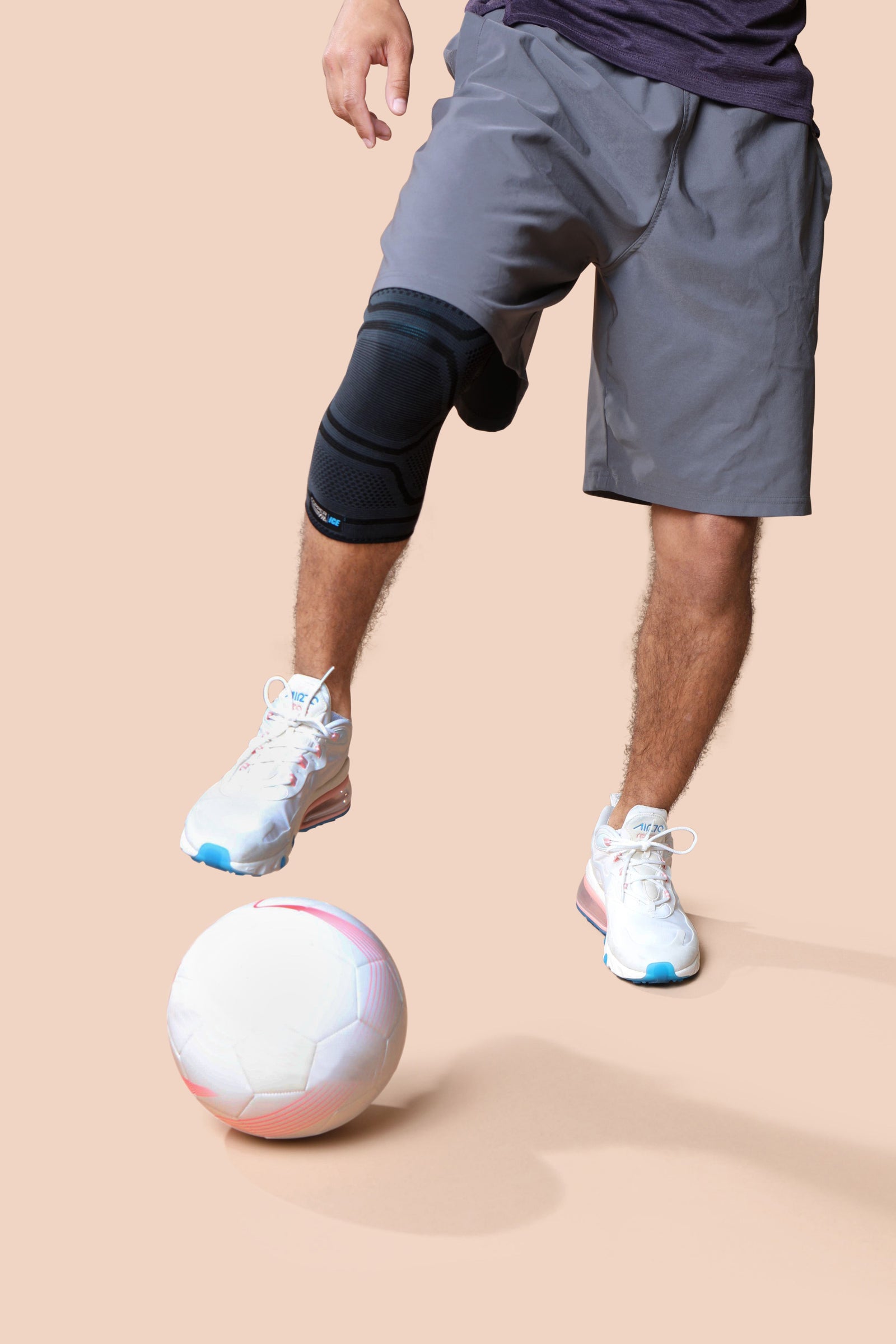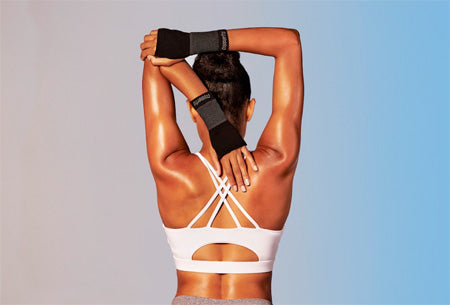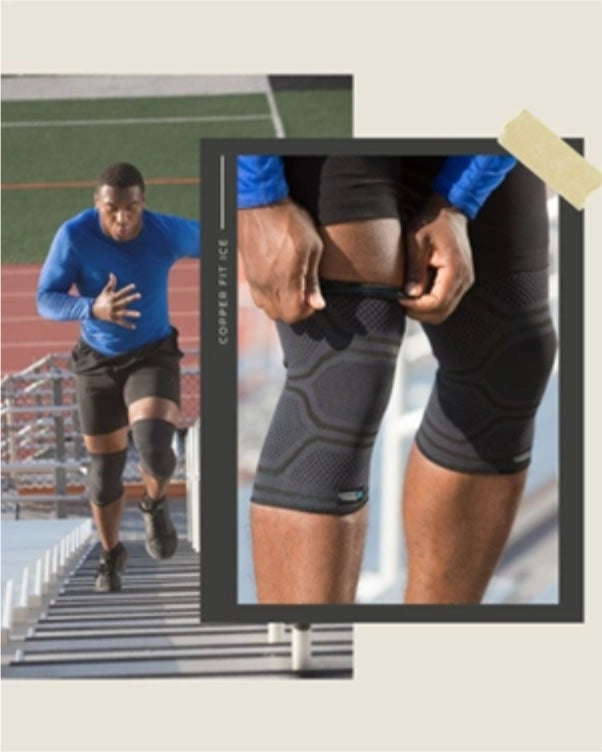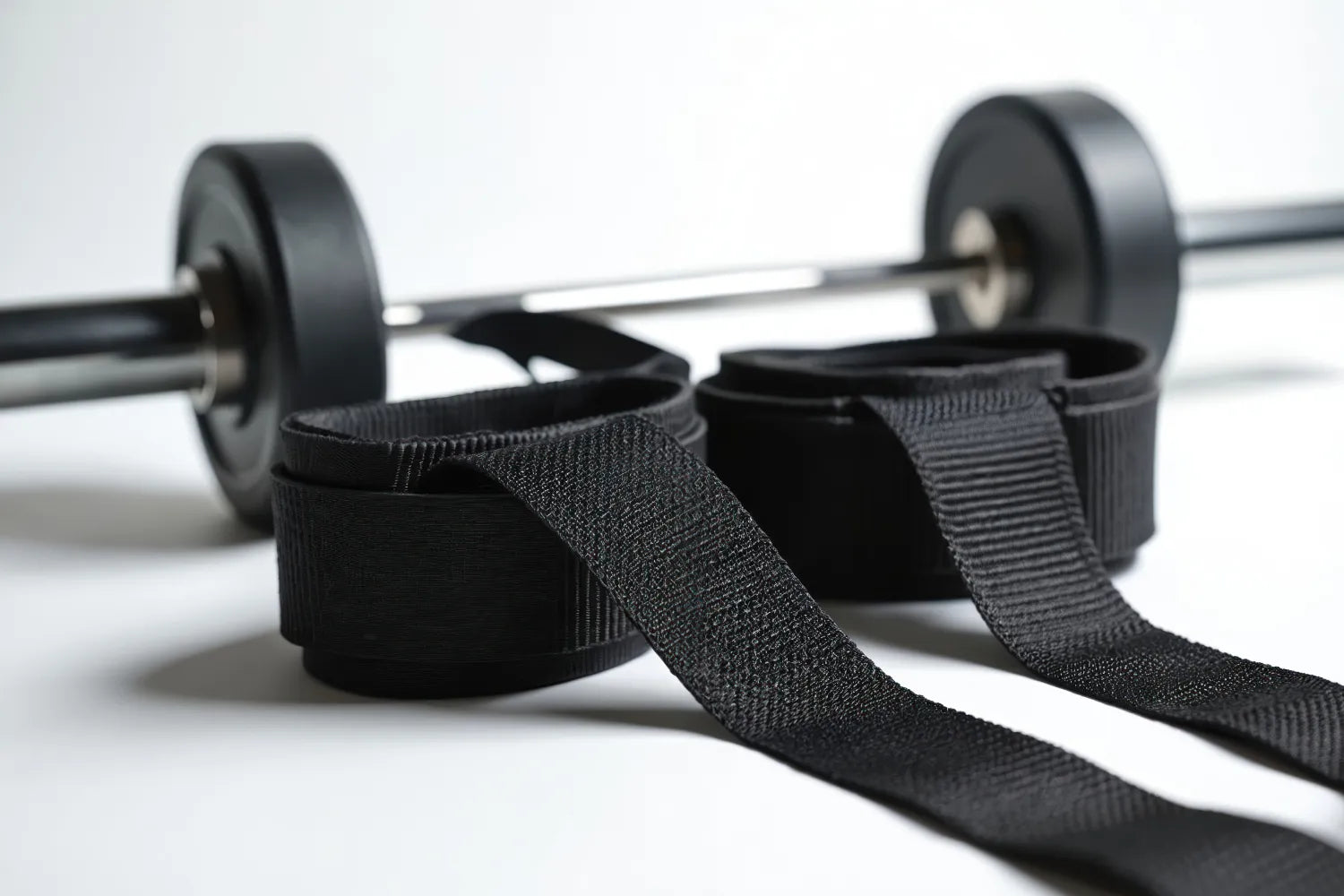
Key Takeaways
- Lifting straps can help support your grip during heavy lifts, but they should be used strategically, not as a replacement for grip strength.
- Safe use comes down to proper strap placement, secure wrapping technique, and balancing strap use with natural grip training.
- Supporting your recovery with methods like compression gear, hot/cold therapy, and mobility work helps ease strain and keeps you active.
Grip strength plays a major role in lifting performance. Whether you’re working on deadlifts, barbell rows, or heavy shrugs, your ability to hold onto the bar often determines how much you can safely lift. That’s why many lifters choose to use lifting straps. These straps wrap around the bar and your wrists, reducing grip fatigue so you can train your target muscles more effectively.
But, while straps can be helpful, they’re not meant to replace natural strength or proper form. Understanding when and how to use lifting straps safely ensures you’re getting their benefits without compromising your progress.
This guide breaks down the science of lifting straps, when to use them, how to use them, and other ways to protect your body and support recovery so you can keep moving forward.
What Are Lifting Straps and Why Do People Use Them?
Lifting straps are durable pieces of fabric, typically made from cotton, nylon, or leather, that loop around your wrist and the barbell or dumbbell. Their purpose is to give your grip additional support during heavy pulling exercises.
Benefits of lifting straps
- Extended training capacity : By reducing grip fatigue, straps allow you to perform more reps or handle heavier loads when your hands would otherwise give out.
- Muscle targeting : Straps let you focus more on large pulling muscles like the lats, traps, and hamstrings instead of worrying about grip failure.
- Confidence under heavy loads : Many lifters feel more secure attempting high-intensity sets with straps in place.
While straps can be a huge help in lifting, it’s important to remember that over-relying on them can reduce the natural challenge your grip faces, slowing progress in forearm and hand strength.
They also don’t replace proper lifting mechanics or training progression. Think of them as a support tool, not a shortcut.
When Should You Use Lifting Straps?
Not every workout calls for lifting straps. They’re best reserved for specific situations where grip becomes the limiting factor. Knowing when to use them and when to avoid them will keep your training balanced and effective.
Heavy pulling exercises
Lifting straps are most useful for heavy pulling movements such as deadlifts, barbell rows, shrugs, and lat pull-downs. These lifts demand a strong grip, and straps help reduce early grip fatigue so you can complete more quality reps. By securing your hold on the bar, you can focus on challenging your back and posterior chain safely.
High-rep or hypertrophy sets
During longer sets, grip strength often fails before your target muscles do. Straps can extend your time under tension, allowing you to fully fatigue the muscle group you’re training. This makes them a valuable accessory for lifters aiming to build muscle size.
Strength-building phases
When working in a strength cycle, especially at higher loads, straps provide an extra layer of security. They make it possible to push heavier weights safely while maintaining proper technique. Used in moderation, they allow you to progress without cutting sessions short due to grip fatigue.
When To Avoid Lifting Straps
Overeliance on lifting straps can hinder your performance and gains. Let’s break down when it’s best to leave the straps behind.
Warm-up sets
Straps should not be used during warm-ups. Lighter sets are an opportunity to naturally develop grip strength and prepare your body for heavier lifts. Building this foundation supports long-term progress.
Explosive and overhead lifts
Straps are not recommended for explosive, Olympic-style movements like cleans and snatches, since they prevent a safe bar release. They should also be avoided on overhead lifts, where it’s safer to drop the bar quickly if needed than to have it tethered to your wrists. Using straps in these situations increases the risk of strain or injury.
Everyday training
Overuse of straps in every workout limits your grip development and creates dependency. Your body adapts to the challenges it faces, so your grip strength will stagnate if it’s constantly supported. Reserve straps for the heaviest sessions rather than daily use.
Step-by-Step: How To Use Lifting Straps Safely
Using lifting straps correctly takes practice, but once you learn the technique, it becomes second nature. Here’s how to set them up and secure your grip without risking circulation or bar slippage.
Step 1: Position the strap on your wrist
- Slide your hand through the loop so the strap lies flat across the back of your hand and wrist.
- Adjust it so it feels snug but not overly tight; circulation should never be restricted.
Step 2: Wrap the strap around the bar
- Place the strap underneath the bar, then bring it over the top.
- Wrap it tightly in the same direction for both hands. The strap should coil securely around the bar without twisting.
Step 3: Set your grip
- Place your palms firmly on the bar over the wrapped strap.
- Rotate the bar slightly to tighten the strap and lock it into place.
Step 4: Safety check
- Ensure both straps are secure but not cutting into your wrists.
- Grip the bar naturally. The straps are there to assist, not replace your hands.
Tips for safety
- Keep the straps tight enough to prevent slipping but loose enough to adjust quickly if you need to release the bar.
- Don’t use straps for weights you can’t control without them. Form and load management come first.
Common Mistakes and Safety Concerns
Even experienced lifters can misuse straps. Being aware of common errors helps prevent setbacks.
- Over-reliance : Using straps for every set discourages grip development and makes you dependent on them.
- Incorrect wrapping : Loose or uneven straps increase the risk of slipping mid-lift.
- Wrist strain : Over-tightening or improper placement puts unnecessary stress on the wrist joint.
- Wrong lifts : Avoid straps during Olympic lifting or any exercise requiring bar release.
Safe strap use is about balance. If you notice discomfort in your wrists, numbness, or reduced bar control, adjust your setup immediately.
Building Grip Strength Alongside Strap Use
Straps help in the moment, but your grip strength still determines long-term progress. Strong hands, wrists, and forearms stabilize your lifts, protect your joints, and improve performance across all movements. Performing grip-strength exercises can help build up your grip strength, which in turn can help you lift more and live better.
Simple grip-strength exercises
- Farmer’s carries : Walk with heavy dumbbells or kettlebells at your sides.
- Dead hangs : Hang from a pull-up bar, gradually increasing time.
- Plate pinches : Hold two weight plates together between your fingers and thumb.
Balance your training by dedicating some sessions to grip work. This ensures that straps remain a helpful tool, not a crutch.
Other Tips To Improve Your Lifting Technique
Lifting straps are only one way to manage the demands of heavy training. Supporting your body through preparation, technique, and recovery ensures you stay active while reducing unnecessary strain.
Here are several strategies to complement strap use and keep your body moving well.
Warm-up and mobility
Preparing your joints and muscles with dynamic stretches can help widen the blood vessels, boost muscle flexibility, and reduce tension before heavy lifts. Simple movements for wrists, shoulders, and hips activate the muscles you’ll be using and improve range of motion. This not only makes lifting more comfortable but also lowers your risk of strain.
Proper form and load management
Technique matters more than equipment. Paying attention to posture, core stability, and bar path ensures your muscles are working efficiently. Progressively adding weight at a pace your body can handle prevents overexertion and encourages steady improvement.
Compression supports
Compression sleeves can provide targeted support around joints and muscles. They can help support circulation, soothe discomfort, and promote muscle relaxation during or after challenging sessions. Many athletes find that this support helps them feel more confident under load and more comfortable in recovery.
Rest and recovery
Your muscles adapt and grow stronger during rest, not just during training. Getting adequate sleep, staying hydrated, and spacing out your workouts gives your body time to repair and recharge. This balance between activity and recovery keeps you moving consistently without burning out.
FAQ
Should beginners use lifting straps?
Beginners can use straps occasionally, but they should focus on building natural grip strength first. Straps should be a supplement to training, not a starting point.
Are lifting straps bad for your wrists?
Not when used correctly. Straps should fit snugly but never cut off circulation or cause sharp discomfort. Proper placement and wrapping technique keep wrists supported.
Can lifting straps increase how much I lift?
They can help you lift heavier loads by reducing grip fatigue, especially in pulling movements. However, strength gains still depend on consistent training, good form, and recovery.
The Bottom Line
Here at Copper Fit, we believe that safe, smart training leads to long-term progress and mobility. Lifting straps are a useful tool when used correctly, but they’re only part of the equation. Our compression gear is designed to help support circulation, soothe discomfort, and promote muscle relaxation, giving your body the backup it deserves as you push through your workouts.
The goal is to keep lifting safely, stay active, and enjoy the journey of building strength. With the right balance of lifting technique, supportive gear, and recovery strategies, you’ll be ready to move forward with confidence.
Sources:
The Best Exercises to Improve Your Grip Strength | Mens Health
Hand grip strength as a proposed new vital sign of health: a narrative review of evidences | PMC
Warm Up, Cool Down | American Heart Association
Compression Clothing and Circulation Benefits | UPMC HealthBeat

